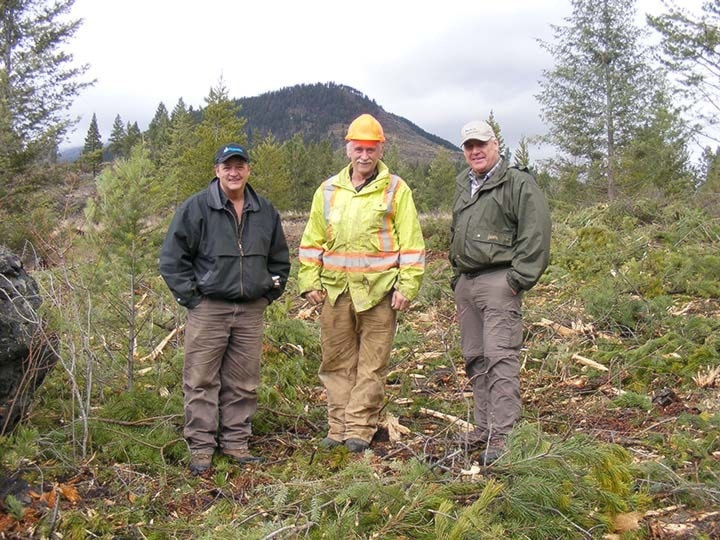Trish Barnes
Another step in the restoration of Lakit Ridge is underway, as mastication machines chew up small, in-grown trees to open up traditional wildlife habitat.
The machines are re-creating the conditions of the area as it once was, before fire suppression allowed grasslands to change into stagnant, fuel-loaded forests.
Rocky Mountain bighorn sheep still graze the ridges and foothills under Fisher Peak (east of Cranbrook), but, compared to historical numbers, populations have decreased.
Prior to fire suppression, Lakit Ridge, Brewery Ridge, Premier Ridge: All were filled with tasty bunchgrasses and snowbrush and nearly empty of trees, making them perfect winter range.
In the 1960s and 1980s, the bighorn sheep experienced large-scale, disease-related die-offs. Scientists have studied the problem for years and have found that contact with domestic sheep and the resulting transmission of disease to be the underlying cause for these population crashes. Recovering these populations has proved to be challenging. Forest in-growth and tree encroachment into previously open habitat is a major contributing cause to the slow population recovery. The most recent efforts have culminated in an ecosystem restoration plan, written in 2006. (The Rocky Mountain Bighorn Sheep Habitat Enhancement Plan.)
The Rocky Mountain Trench Ecosystem Restoration Program (Trench ER) has been carrying out segments of the plan in different treatment units since 2008. This month marks the start of mastication work on Lakit Ridge.
Using an excavator with a special head, operators Don Cook and Chance Paradis shred trees from the top down, leaving small-sized debris that will carry a prescribed burn—the next step in restoration—in 2015.
Money for this portion of the project ($60,000) was provided by the Fish and Wildlife Compensation Program (FWCP), which is a partnership between BC Hydro and the Provincial Ministry of Forests, Lands and Natural Resource Operations.
Larry Ingham of FWCP said these enhancements will restore the benefits of traditional spring and winter range.
"Sheep are slowly coming back again," Ingham said. "But they need open areas for better forage, for better sight-lines to escape from predators, and for better movement corridors.
"These treatments restore the habitat to closer to its natural condition—how it would be if fires had not been suppressed since the 1920s."
Dan Murphy (with the Rocky Mountain Trench Natural Resources Society, who helped secure the funding) said the treatments are going well.
"We're glad to have found such good operators who are paying attention to their footprint," Murphy said, "and we're grateful to the Fish and Wildlife Compensation Program for working with us and with Trench ER to move forward with sheep habitat enhancement.
"The area will be burnt in 2015 to help rejuvenate the forage species."
Visit www.trench-er.com to learn more about this project.
